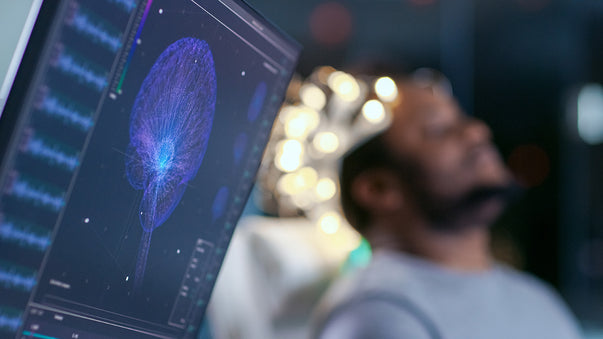Major Rejuvenation Achieved in Rats?

A draft research paper is making the rounds in the Internet circles of life extension fans and enthusiasts of anti-aging medicine. Titled “Reversing age: dual species measurement of epigenetic age with a single clock,” the paper claims that a treatment with young blood plasma “more than halved the epigenetic ages of blood, heart, and liver tissue” in laboratory rats.
“The treatment was accompanied by progressive improvement in the function of these organs as ascertained through numerous biochemical/physiological biomarkers and behavioral responses to assess cognitive functions. Cellular senescence, which is not associated with epigenetic aging, was also considerably reduced in vital organs.”
“Overall, this study demonstrates that a plasma-derived treatment markedly reverses aging according to epigenetic clocks and benchmark biomarkers of aging.”
Epigenetics studies the changes that affect gene activity and expression. An epigenetic clock is a biochemical test that can be used to measure age.
“I believe major rejuvenation has been achieved in a mammal, using a relatively benign intervention that shows promise of scaling up to humans,” said Josh Mitteldorf, a biologist who has authored several books on aging. “I’m going to stake my reputation on it.”
Whether these results are rock solid and can scale from mice to humans, and from the lab to medical practice, is likely too early to tell. But it’s encouraging to see that scientists are excited and enthusiastic.
Blind People See Shapes After Brain Stimulation
Researchers from Baylor College of Medicine have advanced toward the development of a device that could restore sight by bypassing damaged eyes and delivering visual information from a camera directly to the brain.
In a study published in Cell, the researchers describe an approach in which implanted electrodes are stimulated in a dynamic sequence. They essentially “traced” shapes on the surface of the visual cortex that participants were able to “see.”
According to the researchers, this demonstrates that it could be possible for blind people to regain the ability to detect and recognize visual forms by using technology that inputs visual information directly into the brain.
Arterial System Simulation at Subcellular Resolution
Biomedical engineers at Duke University are developing a massive fluid dynamics simulator that can model blood flow through the full human arterial system at subcellular resolution.
One of the goals of the effort is to provide doctors with a virtual reality system that can guide their treatment plans by allowing them to simulate a patient's specific vasculature. This would help them accurately predict how decisions such as stent placement, conduit insertions, and other geometric alterations will affect surgical outcomes.
A study published in Journal of Computational Science describes the first implementation of the new blood flow simulation tool, HARVEY.
Tattoo Electrodes for Brain-Computer Interfaces
Researchers at Graz University of Technology, École Nationale Supérieure des Mines, and Scuola Superiore Sant'Anna, have developed ultra-light tattoo electrodes that are hardly noticeable on the skin and make long-term measurements of brain activity cheaper and easier.
The new tattoo electrodes are described in a paper published in npj Flexible Electronics. They are suitable for long-term EEG measurements and magneto-encephalography (MEG), a well-established method for monitoring brain activity.
The researchers intend this technology to be used in clinics and in neuroengineering, as well as in the field of brain computer interfaces.
Fasting Plus Vitamin C May Slow Down Cancer
Researchers at University of Southern California and IFOM Cancer Institute have discovered that a fasting-mimicking diet could be more effective at treating some types of cancer when combined with vitamin C.
In a study published in Nature Communications, the researchers report that the combined treatment delayed colorectal cancer progression in multiple laboratory mice. In some mice, combined treatment caused disease regression.
The findings suggest that a low-toxicity treatment of fasting-mimicking diet plus vitamin C has the potential to replace more toxic treatments.
3D Tumor Models for New Anti-Cancer Drugs
Scientists at Josep Carreras Leukaemia Research Institute have used 3D models to break down the DNA behavior of cancer cells.
The research results were published in Epigenetics. They indicate that “organoids,” 3D tumor models grown in the lab, can be very useful for the biomedical research community and the pharmaceutical companies developing anti-cancer drugs.
According to the scientists, this could revolutionize cancer treatment.
More Articles
Don't miss a beat! In our Pulse Newsletter, Thrivous curates the most important news on health science and human enhancement, so you can stay informed without wasting time on hype and trivia. It's part of the free Thrivous newsletter. Subscribe now to receive email about human enhancement, nootropics, and geroprotectors, as well as company news and deals.
Read more articles at Thrivous, the human enhancement company. You can browse recent articles in Thrivous Views. See other Pulse Newsletter articles. Or check out an article below.
-
Berberine and Metformin for Longevity
Aging and shortening of life result from the body’s decreasing ability to refresh and repair itself over time. As the ...
-
Kernel May Revolutionize Neuroscience
Kernel, a neuroscience company based in Culver City, will soon unveil devices that can see and record brain activity, enabling ...


